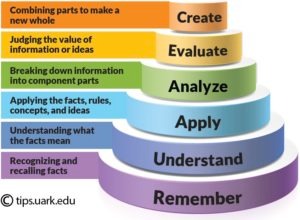- October 24, 2022
- 0 Comments
- In Occupant Health & Wellness
- By Steven Winter Associates
What is a sustainable building? We know it must be an energy-efficient, high-performance building and emit as little carbon as possible to protect the environment. But a sustainable building must also be a healthy building that protects people and communities.
A building can’t be considered sustainable if it doesn’t sustain the physical and mental health of all its intended occupants and sustain the community around it.
Healthy buildings require a holistic approach that accounts for how every building material, system, and technology affects the wellbeing of occupants.
This is an important topic at SWA, so we asked our interns to explore it! They talked to our experienced building systems, sustainability, and Passive House consultants and put together this blog post as a resource on designing and maintaining a healthy built environment.
Keep reading to learn more about the following considerations for healthy buildings:
- Occupant comfort and productivity
- Optimal indoor air quality (IAQ)
- Ventilation system upgrades in existing buildings
- Healthy building certifications (Fitwel, WELL, etc.)
- Building operations and maintenance staff training
There are many other considerations beyond this list, and we encourage you to explore our blog posts on inclusive design, embodied carbon, adaptive resiliency, Passive House design, social equity, and more.
Occupant comfort and productivity
The COVID-19 pandemic put a spotlight on how our environment effects our health—especially when stay-at-home orders began, and now with the return to the office and the classroom.
We spend 90% of our time inside buildings, and aspects like lighting, ventilation, and temperature all affect our productivity as they improve functionality and occupant comfort. Even minor adjustments can make people more comfortable and therefore, more productive.
The 2015 Impact of Green Buildings on Cognitive Function study demonstrated that improved indoor environmental quality can double cognitive function. Researchers found that scores on cognitive function tests averaged 61% higher in green buildings with low volatile organic compounds (VOCs) and averaged 101% higher in green buildings with low VOCs and enhanced ventilation compared to conventional buildings.
Here, we explore four common issues that affect occupant comfort and productivity, followed by a personal anecdote from the classroom.
4 Ways to Improve Comfort and Productivity
Ventilation
When it comes to healthy buildings, ventilation is always top of mind and can quickly turn into a very technical discussion. At its base level, people need fresh air to be healthy and comfortable, and a constant ventilation system can provide fresh air while filtering out any particulates or contaminants in the air.
Proper ventilation can help filter pollutants that impact our cognitive abilities to our sleep quality, including:
- Water vapor
- Carbon dioxide (CO2)
- Dust and pollen
- Volatile organic compounds (VOCs)—more on this below
- Carbon monoxide (CO)
- Radon
In the next sections of this blog post, we go in-depth on VOCs and ventilation strategies to improve indoor air quality. (See “Optimal indoor air quality” and “Balancing occupant health and energy use” below.)
Thermal Comfort
Everyone knows how uncomfortable it can be when a space is too hot or too cold. Drafts, temperature fluxes, and other uncomfortable situations can be avoided in the design of a new building by ensuring the thermal envelope is airtight with high-performance windows. Any air leaks in the outer boundary of the building will allow unconditioned air to enter the space and disrupt the interior conditions. Common sources of air leakage include:
- Around windows
- Duct leakage
- Equipment leakage
- Accessory leakage
- Any penetrations through the building envelope
Duct sealing of heating, cooling, and ventilation ducts from the source to the delivery point is critical to save energy and improve thermal comfort. Using Aeroseal can help eliminate air leaks up to ½” in size by spraying pressurized sealant through the system.
A well-designed envelope allows for reduced mechanical systems sizes and increased comfort, but must be paired with appropriate ventilation strategies for a healthy building.
Lighting
Lighting has a large impact on the way we live and work. For example, access to daylight can help regulate circadian rhythms and improve mood. The color temperature of light throughout the day can also help with circadian rhythm, as well as reduce eye fatigue.
Windows must be carefully designed to daylight interior spaces (with the added benefit of reducing energy use) and provide a direct line of sight outside without contributing to glare.
Recommended lighting design guidelines include:
- Distribute light evenly throughout a building
- Provide ambient light and gradual changes in light levels
- Reduce reflective glare and prevent direct glare
- Ensure access to natural daylight
- Provide adequate task lighting
- Specify high-CRI lamps
Acoustics
The sound quality of the spaces we occupy can affect our concentration and comfort. When designing both commercial and residential buildings, it is important to consider acoustic design to ensure there are minimal distractions. For example, a loud neighbor can lower our productivity when working from home or disrupt our sleep schedule.
Use these strategies to reduce sound transmission between areas where people live and work:
- Sound barriers or sound isolation at walls and doors
- Sound reducing surfaces
- Minimum background noise can help to mask sounds in an open area
Example: In the Classroom
As a graduate student, I’ve experienced a variety of learning environments and have several examples of the consequences of an unhealthy and distracting design.
Several classrooms on campus were designed and built before central air conditioning was common, creating an uncomfortable environment especially in extreme heat when classes begin at the end of August. One classroom was so hot that students couldn’t focus on the lecture, and the only solution provided was an industrial fan, which created so much noise that it was impossible to hear the professor. Both the thermal discomfort and the acoustic issues made class very challenging until the temperature cooled.
The first building on the Penn State campus to be LEED® Gold certified in 2004 is an example of a green building with several innovative techniques that unfortunately do not always work as intended. The building was designed with automatic windows to help with ventilation and temperature regulation. Our class was required to work in the building for a project while it snowed near the end of November. The automatic system malfunctioned and the windows opened, freezing the space almost instantly with no way to close them. We were unable to continue our work, and the professor ultimately had to postpone the assignment since it was impossible for students to work in the cold.
While these may be extreme examples, there are many other issues that can affect productivity and comfort levels. Keep the occupant experience in mind during design to ensure every building will be a comfortable and enjoyable place.

Written by Holly Zimmerman, Building Systems Intern on SWA’s Passive House team
Optimal indoor air quality
Indoor air quality (IAQ) is one of the key factors in establishing a healthy building. IAQ includes providing satisfactory living conditions to occupants through ideal temperatures and humidity control and having adequate ventilation within the building to prevent pollutants from accumulating.
Identifying and controlling common indoor air pollutants must be part of a strategy to improve occupant health and well-being—especially with the prevalence of volatile organic compounds (VOCs) in our everyday lives.
Quality ventilation and filtration are important for removing or diluting pollutants. High temperatures and humidity can also increase pollutant concentrations and affect thermal comfort and well-being. Ventilation and filtration directly impact occupants by reducing contaminants and addressing humidity.
The issue of indoor air pollutants is not just from a singular source but rather, the repeat exposure of air contaminates.
Volatile Organic Compounds (VOCs)
VOCs are organic compounds capable of vaporizing into the atmosphere and emitting chemicals. These airborne particles contain chemicals that can have short- and long-term adverse health effects. VOCs can irritate the eyes, nose and throat, cause breathing difficulties, dizziness and nausea; and in extreme cases can cause damage to the central nervous system, organs and cause cancer.
There are no federal standards for VOCs for residential construction, but several volunteer programs, including EPA’s Indoor airPLUS, address this concern. VOCs that photochemically react in the atmosphere to produce ozone are regulated, while some products classified as “low VOC” or “no VOC” utilized in homes can contain harmful levels.
Low total VOC (TVOC) concentration levels are less than 0.3 ppb, acceptable levels range from 0.3 – 0.5 ppb, and high levels are greater than 0.5 ppb.
Common VOCs and Their Sources
- Acetone: nail polish remover, furniture polish, paint, and adhesives
- Butane & Propane: heating and cooking
- Carbon Tetrachloride: refrigerant, dry cleaning agent and propellant in aerosol cans
- Ethanol: detergents and sanitizers
- Isopropyl Alcohol: cosmetics, perfumes, and disinfectants
- Formaldehyde: furniture textiles, shampoo, paint and more
- Toluene: nylon, solvents, dyes, and paints
Ventilation Systems
Proper ventilation is a proactive solution to reducing TVOC concentrations and preventing high levels of indoor air pollutants. Here, we discuss the types of ventilation systems and how to balance effective ventilation and energy use.
- Exhaust-Only Ventilation: Exhaust-only ventilation refers to the point-source removal of contaminants through an exhaust fan. These are typically located in laundry areas, bathrooms, and kitchens. These should be ENERGY STAR®-certified and set to run continuously with the ability to boost.
- Supply-Only Ventilation: Supply-only ventilation refers to outside air distributed indoors via the ducted heating and cooling system. It is most effective when paired with demand control and dehumidification. When using supply air to “flush” out contaminants, the outdoor air passes through a filter, usually at the air handler units. This is good for capturing some pollutants, especially if the filter is MERV 13, but it won’t address air temperature and humidity unless the air handler is in heating or cooling mode.
- Balanced Ventilation: ERVs and HRVs: Balanced ventilation means the amount of air being supplied is equal to the amount being exhausted. A balanced system can be a combination of the exhaust and supply strategies described above or a system where the energy is recovered during the intake/exhaust process known as energy or heat recovery ventilation (ERV or HRV). ERVs and HRVs typically have filtration at both the intake and exhaust and temper the air before distribution. ERVs also decrease the humidity in the air.
Delivering Ventilation
Except for stand-alone, portable air cleaners, ventilation systems require ductwork. It’s important to have properly sized and well-sealed ductwork to minimize losses and ensure a “clean” pathway for air distribution.
Demand control ventilation, where concentrations of air pollutants are measured in the home and the airflow and ventilation automatically adjusts based upon occupancy and occupant behavior, are exciting innovative technologies.
So, while VOCs might not be federally mandated (yet), we have the tools with ventilation, filtration, and occupant behavior to limit our exposure to harmful contaminants.

Written by Abigail Harbeck, Sustainability Intern on SWA’s Residential Building Systems team
Balancing occupant health and energy use
IAQ in existing buildings needs our attention because most have poor ventilation systems—or no ventilation system at all. However, new local laws and regulations (e.g., DC’s Building Energy Performance Standards (BEPS); New York City’s Local Law 97) are requiring many existing buildings to reduce their energy use and become more efficient.
How can existing buildings adopt improved ventilation systems while not getting penalized from an energy-use standpoint?
We explore this below by walking through a project that balanced indoor air quality with BEPS compliance in Washington, DC.
Ventilation in Existing Multifamily Buildings
Neither of the following fresh air introduction methods are permitted under current Washington, DC, code but they are common in existing multifamily buildings in the region.
- Exhaust-Only Systems: As discussed above, these systems “introduce” fresh air through exhaust fans in laundry areas, bathrooms, and kitchens. Though our recommendation is that exhaust fans are set to run continuously with the ability to boost, existing residences may only have exhaust fans capable of running intermittently. In multifamily buildings, this system pulls air from outside an apartment into the apartment. The drawback is that this system does not discriminate on where the air comes from. Sometimes it’s fresh air from outside; sometimes it’s air from a corridor, neighboring unit, or interstitial space.
- Dedicated Fresh Air Delivered via Hallways: This method introduces fresh, sometimes conditioned outdoor air into common corridors; this fresh air is then drawn into individual apartments through undercuts on front doors and intermittent in-unit exhaust fans. Similar to exhaust-only systems, this system relies heavily on intermittently-operating bathroom and kitchen fans to exhaust air from apartments. This method of fresh air introduction sometimes helps with unit-to-unit infiltration, but typically has significant issues with stack effects and balancing.
Upgrading to Balanced Ventilation via ERVs
As Washington, DC, moves toward upgrading their building stock, many building owners have made it a priority to get their existing buildings to meet the benchmark energy use dictated in the new BEPS. But what happens when a healthy building goal, such as improving indoor air quality, increases energy use?
Step 1: General retrofits
I ran into this issue with one of the projects I was involved in. The first step was to implement general retrofits. SWA helps building owners pick what retrofits to implement by providing detailed reports with energy and cost savings for different retrofits. The report provides a certain percentage of overall savings that can be achieved by combining retrofit efforts in order to meet the BEPS.
SWA identified retrofit measures for the buildings, including envelope upgrades such as adding a new exterior insulation and finish system, air sealing, replacing existing windows and doors with new ENERGY STAR-rated models, introducing LED lighting, electrifying domestic hot water (DHW) systems and HVAC systems, and introducing mechanical ventilation via an ERV—which would provide pre-conditioned fresh air to a space while exhausting the stale air.
However, when implemented, these general retrofits did not result in the energy-savings percentage SWA was aiming for in order to meet Affordable Housing Retrofit Accelerator (AHRA) rules, which helps affordable housing properties meet the BEPS.
Step 2: Adjusting the baseline
The next course of action was to investigate alternative ways to reduce energy.
BEPS compliance allows for owners to take alternative compliance pathways under some circumstances. Any building using an alternative compliance pathway must be approved by the Department of Energy & Environment (DOEE). DOEE offers various baseline adjustments, one of which includes adding mechanical ventilation to spaces that lacked mechanical ventilation. We took this approach in order to not incur an energy penalty for new ventilation systems (see Table 19 under 4.4.1. – Baseline Adjustment Eligibility and Methodology).
SWA estimated this baseline energy use increase by assuming that there was an existing mechanical ventilation system already in place and including an inline fan that provided fresh air ducted to the return side of the air handling unit (AHU).
Step 3: Implement envelope upgrades and an ERV
Using this method, we recommended the measures described in Step 1 but with a new baseline described in Step 2. This approach let us achieve higher energy savings and the project met the savings percentage necessary to meet programmatic rules for the AHRA.
The takeaway from all this is that we can modify the baseline EUI to account for increased energy consumption from an improved ventilation system. This means we’re not paying a compliance penalty for improving IAQ, although we do increase compliance complexity.

Written by Hashani De Silva, Building System Intern on SWA’s Building Operations, Decarbonization, and Efficiency (BODE) team
Healthy building certifications
As more project teams prioritize occupant health and wellness, they are choosing to pursue building certifications that cover a wide range of health benefits and make each building extremely user-oriented and versatile.
These certification programs include LEED green building certification, WELL Building Standard, Fitwel® certification, and more.
Often, the requirements for these programs overlap, allowing project teams to earn credits for multiple certifications in a cost-effective manner. These certifications also signal to a building’s occupants that there are measures in place to protect their physical and mental health.
Healthy building certification programs can help project teams approach occupant health from a holistic perspective that recognizes the multidimensionality of wellness for different people, communities, and businesses.
What is Wellness?
Wellness can be hard to define, as it can have a different meaning based on a person’s culture, history, or current situation. Approaching wellness holistically and understanding that there are many levels to it can help project teams pursue strategies that accommodate many different people.
Wellness is thought to have eight dimensions: physical, spiritual, intellectual, social, occupational, financial, environmental, and emotional mental health. Each dimension can have a large impact on a person’s life and physical wellbeing.
Next, we break down a few health-oriented certification programs and how they promote different dimensions of wellness.
Certification Programs Focused on Health & Wellness
WELL Building Standard
The WELL Building Standard is made up of a series of features that projects can earn through design interventions and policy implementation.
The most recent version, WELL v2, is built on six principles: equity, global application, evidence-based research, technically robust strategies, customer-focus, and resiliency. The credits, and the principles behind them, are human-oriented to help project teams create an effective strategy that values health and wellness.
While some features, like operable windows, have environmental benefits as well, the main focus of this building standard is to ensure that human health is enhanced in important spaces—like the workplace. This is achieved through a performance-based system where annual on-site testing is required to ensure the building’s systems and strategies for indoor air quality, drinking water quality, and thermal comfort performance (at a minimum) are effective.
Categories include:
- Air (requires annual indoor testing to verify quality)
- Water (requires annual drinking water testing to verify quality)
- Nourishment
- Light
- Movement
- Thermal Comfort (requires annual thermal testing to verify comfort)
- Sound (some optimizations require acoustic testing to verify)
- Materials
- Mind
- Community
It’s estimated that more than a fifth of Fortune 500 companies, including Goldman Sachs and LinkedIn, operate from WELL-certified office buildings. The health benefits from WELL credits can increase employee productivity at these companies. As more workers look to improve their mental health, certifications like WELL could become an expectation for current employees and prospects.
Fitwel
Fitwel is another certification system that promotes occupant health and wellness by measuring building attributes that indicate how user-oriented or healthy a building is.
Created by the U.S. Center for Disease Control (CDC), Fitwel is more focused on internal human health with various credits that target disease or injury prevention.
Fitwel has certain advantages for commercial and office building projects. The program’s procedures and policies recognize the growth that can occur in businesses when employees are happy and have more incentive to come to work.
Aspects of Fitwel also help with risk mitigation, preventing situations that could cause absenteeism. Finally, Fitwel uses a unique measuring system that can illustrate a project’s Environment, Social, and Governance (ESG) metrics, which can make it easy for companies to keep track of the impacts of their actions and adjust if necessary.
Indoor airPLUS
Unlike WELL and Fitwel, Indoor airPLUS focuses mainly on air quality. Created by the Environmental Protection Agency (EPA), the program begins at the construction and installation stage to ensure that private homes as well as larger projects have clean air for their future occupants.
Indoor airPLUS outlines the proper strategies of installing products such as:
- Moisture control systems
- Heating, ventilating, and air-conditioning systems
- Combustion-venting systems
- Radon resistant construction
- Low-emitting building materials
Products in these categories that meet Indoor airPLUS standards can ensure quality air while reducing future risk and quality assurance.
WELL and LEED: How Certification Programs Overlap
The LEED rating system is another certification program that uses various credits to address sustainability, health, and quality throughout a building.
LEED focuses on a variety of design interventions that are meant to reduce carbon emissions. However, an important part of LEED is the extensive impact it can have on people’s social lives, health, and overall quality of life. These benefits are why the LEED certification is considered a social responsibility strategy by some businesses.
Here are some examples of how credits for WELL and LEED overlap, resulting in outcomes a that benefit building occupants and reduce emissions.
- Natural Materials: Natural materials include biodegradable and renewable materials that are free of toxins, as well as locally harvested products that reduce the distance materials need to travel and therefore, decreases emissions. Local materials have also been found to decrease diastolic blood pressure and increase creative performance. Similarly, biophilic designed spaces, which incorporate plants or nature indoors, increases the mental state of occupants.
- Natural Ventilation: Natural ventilation reduces utility costs while improving concentration and productivity. This can include maneuverable windows that allow users to let fresh air into the space.
- Well-Insulated Building Envelope: A well-insulated building envelope reduces the use of heating and cooling mechanisms while improving thermal comfort and noise mitigation.
- Daylighting: Daylighting reduces the need for indoor electric lighting, reducing energy use while positively impacting the circadian system functioning of occupants and increasing visual comfort.
All of this goes to show that the built environment impacts people at work, at home, and in every other part of their daily lives. The building industry is at the heart of creating stronger communities and ensuring the sustainability of both the environment and human health.

Written by Sarah Chee, Sustainability Intern on SWA’s Sustainable Building Services team
Training building operations and maintenance staff
Operations and maintenance (O&M) staff are on the front line of the healthy building movement. Training for O&M staff ensures the smooth operation and optimal performance of healthy buildings, but this vital step is often overlooked due to lack of budget at the end of a project.
Building operators and maintenance staff are responsible for the upkeep of features and technology that make a building a healthy building. Installing a new piece of equipment will only improve a building if the O&M staff understand its importance, how to maintain it, and how to identify and respond to issues with the equipment.
Effective training programs for O&M staff can result in long-term cost saving for building owners and managers. When building staff are properly trained, more can be done in-house to maintain, repair, and upgrade systems, vs. hiring contractors.
What does an effective training program look like? Here are three ways to build the right training program for your O&M building staff:
Know your training audience
O&M Staff
It may seem obvious, but the most effective trainings are customized for a specific audience. A training that is too broad may fail to engage participants, and they won’t take ownership of their learning.
Ask these questions to narrow down the attributes of your O&M training participants prior to building a training program:
- What level of prior knowledge do participants have?
- What do participants want to gain? (E.g., New technical skills, ability to be more proactive)
- What do you want participants to do differently because of this training?
- Will participants understand and be able to apply the training in the field?
Building Residents & Occupants
It’s important to note that the actions of building occupants can have just as much of an effect on building systems as the O&M staff. Some building managers will educate occupants on ways they can help maintain the health and comfort of the building. We’ve seen this done through short tips videos and virtual tours.
Don’t forget to explain the benefits from their perspective: By following best practices, occupants can all be more comfortable inside the building and lower their energy bills.
Set a behavior-change goal
A training program should create an obvious change in O&M staff behavior. Use these questions to help you set the goal, create a training program that will change a behavior, and determine ahead of time how you will measure the effectiveness of the program:
- Has the behavior change been planned? (What result are we looking for?)
- Can this change be observed? (Documented logs, inspections, etc.)
- Are we helping participants understand the behavior change and its benefits?
- Is there trainee ownership of the change?
- Is there a standardized written rounding system for daily reminders? (Learn more about this below)
- Do they know how to refresh their knowledge?
- Do they have all the help they need?
- Are they ready?
Practice participant-centered learning
Learning is a dynamic process, and all learners have their own individual style in which they best retain knowledge. As my time spent as an adult trainer in a former role, I learned that it is essential to ensure all participants are actively involved in the learning process.

As seen in Bloom’s Taxonomy, effective trainings should build knowledge by using all levels of learning, starting at the bottom:
- The ability to recall learned information
- Taking that information and interpreting it
- Implementing what was learned
- Establishing how the different parts of learned information relate to each other
- Making judgments by checking and critiquing
- Taking all the elements and forming a new functional behavior
Image Credit: Jessica Shabatura
At SWA, we employ a three-tiered approach to deliver a training that caters to different learning styles:
Classroom
We begin trainings with 8 hours of traditional classroom sessions delivered in person (or online seminar). In these sessions, participants are trained in all aspects of what is and will be needed from them. The classroom sessions encourage participation in the form of questions, answers and open discussions in knowledge sharing.
On demand
Instructional videos available on demand via the web and a mobile app reinforce the learning from the classroom. These videos break down exactly what is needed and how they will show the understanding and application of the training.
The on-demand videos are accompanied by short quizzes at the closing of each session to further galvanize their new knowledge and allow the participants to prove their new understanding and skills.
We launched our training platform, SWA Academy, to provide on-demand trainings focused on practical design and construction techniques, efficient building operations and maintenance practices, and current programs and requirements. Click here to check out the platform or sign up here for new course announcements.
Rounding checklist
The rounding checklist is a reminder for the behavior change in the participant. Daily, weekly or monthly reminders notify the participant to continue to employ the skills gained from the training. Simple reminders such as “remember the second filter deep in the ERV” aim to solidify their knowledge while also allowing the participant to go back and refresh their knowledge with links to the on-demand videos laid out in the app.
Each of these steps build upon each other as each delivers the common content in its own varied way to avoid information saturation and to keep the participant involved.

Written by David Armstrong, Building Systems Analyst (and former intern) on SWA’s Building Operations, Decarbonization, and Efficiency (BODE) team
